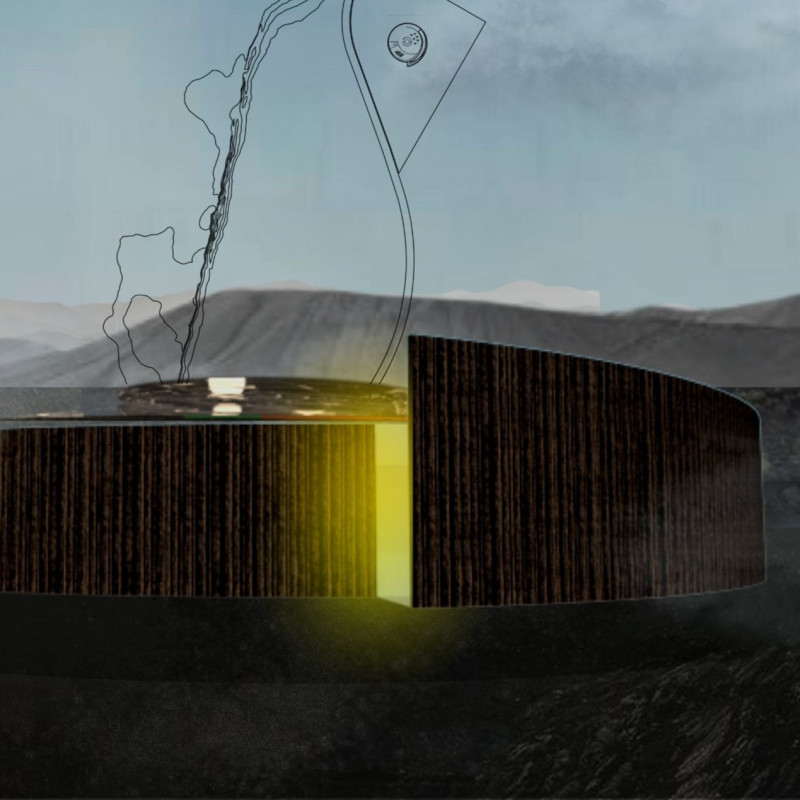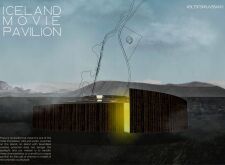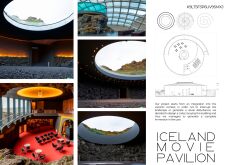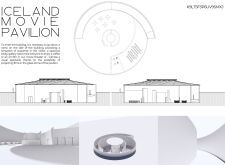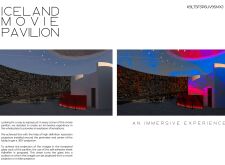5 key facts about this project
The Iceland Movie Pavilion is an architectural project situated in Iceland, designed to provide a space for cinematic experiences while embracing the surrounding natural landscape. The pavilion functions not only as a theater for film screenings but also as a communal space for gathering, reflection, and engagement with local culture. The architectural design aims to create a seamless interaction between the built environment and the unique geological features of Iceland.
The overall design of the pavilion is characterized by its circular layout, which fosters a sense of connection among visitors. A downward ramp leads to a central lobby area that serves as a multifunctional space, incorporating elements such as a café and exhibition zone. This approach encourages social interaction and enhances the visitor experience by providing areas to pause and engage before entering the main screening space.
The signature aspect of this project is the integration of a glass dome that allows natural light to permeate the interior, creating a dynamic atmosphere that changes throughout the day. This unique feature not only enhances the visual connection to the outdoor environment but also serves as a canvas for projections, allowing the pavilion to modify its character in response to different cinematic themes. Visitors experience an immersive environment where the boundary between the indoors and outdoors blurs, reflecting the Icelandic ethos of living in harmony with nature.
Material choices play a critical role in the architectural design of the Iceland Movie Pavilion. Local volcanic stone is utilized in various elements, reinforcing the connection to the landscape while providing durability and a textural contrast to the smoother surfaces of glass and wood. The use of concrete contributes to the structural integrity of the design while allowing for fluid forms that mimic natural topographies.
Architectural details include expansive glazing that offers sweeping views of the surrounding terrain, as well as acoustically designed interiors that ensure high-quality sound for film screenings. The use of self-adhesive projection sheets on the glass dome enhances functionality, allowing for engaging displays that connect the cinematic experience with the natural world.
The design of the Iceland Movie Pavilion represents a thoughtful exploration of space that emphasizes community interaction and environmental integration. Through its functional versatility and unique architectural language, it stands apart from conventional cinema designs. This pavilion is an exemplar of how architecture can enhance cultural experiences while remaining deeply rooted in its geographical context.
To gain further insights into the Iceland Movie Pavilion, readers are encouraged to explore the architectural plans, architectural sections, architectural designs, and architectural ideas that inform this project. Each element reveals the underlying principles guiding its construction and function, illustrating how the design merges aesthetic considerations with practical applications.


